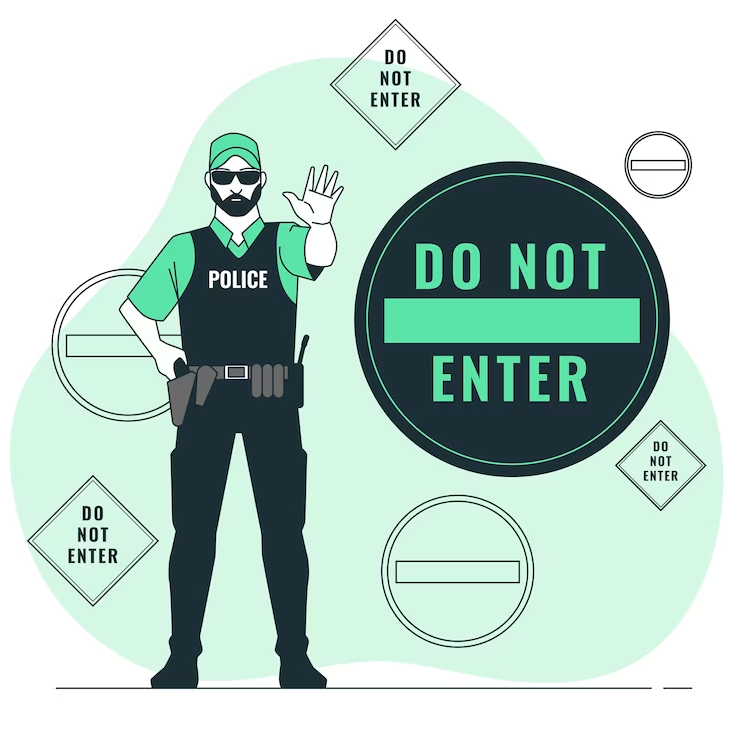When Normal People Do Bad Things: A Look at the Stanford Prison Experiment

Image by storyset on Freepik
How much are you affected by situational states? What aspects of your behavior are simply due to the situation you have found yourself in, or the role you have to play in society?
These were the milder forms of the questions that usually went through the mind of Philip Zimbardo, a Jewish-born American who was born in 1933 to Jewish parents.
Being born in America and surviving through the time of the Holocaust, Philip was often drawn to answer the questions about human behavior that propelled the Germans to carry out the evil acts that defined the Second World War.
He grew up in the South Bronx area of New York City and was the first in his family to go to college. He attended Brooklyn College and then went on to get his Ph.D. in psychology from Yale University.
Philip was greatly influenced by social justice and civil rights, which brought meaning to his work in academia and research.
He wanted to answer the questions I asked above and mostly he wanted to know how ordinary men were influenced to commit the atrocities that were committed during the World War.
What if you are behaving the way you behave because of your assigned role in life? What if you're doing things because of the situation you find yourself in, and your role is simply what is causing you to do certain things you find yourself doing?
The Stanford Prison Experiment

Mental health illustrations by Storyset
In 1973, Philip and his colleagues at Stanford University conducted an experiment in the Stanford University Psychology Department basement after they had obtained permission from the Psychology Department.
This experiment was supposed to simulate the behavior of prisoners and prison guards for a period of fourteen days. They had initially wanted to use the Stanford University laboratory, but the nature of the experiment had made that option out of the question.
The simulation made use of plywood to partition the building and create cells, and the area was painted to really give it that prison look.
The researchers had complete access to this area and used it to perform their experiment that was in accordance with the University’s ethical guidelines. But what happened in this experiment created shock in the world of behavioral science, psychology, and social sciences.
There was no way to predict the behavior of the men who were used for this experiment.
The experiment made use of young men between the ages of 18 and 30 who were physically sound and mentally sharp and had no significant medical or psychological history. The participants went through a screening test, and in this test, they were assessed for their stability in this study.
The participants were not to have any previous drug or criminal records and were also made to sign a consent form.
Cameras and one-way mirrors were used to observe the behavior of the subjects throughout the six days of this experiment.
The Prison Guards

Mental health illustrations by Storyset
During this experiment, in the early phases, the guards' behavior was unremarkable, but that did not last for long. They quickly became abusive and authoritarian and started to use forceful means to have the prisoners comply.
It was just the second day of the experiment, and the guards were being verbally abusive and started using physical punishment to ensure control.
By the third day, the guards had become increasingly brutal and sadistic and were humiliating the prisoners and subjecting them to degrading treatment.
Some of the guards in this experiment did what they could to maintain a culture of fear and intimidation within the prison, and the impact on the prisoners was a psychological breakdown (anxiety and depression). Some of the prisoners became increasingly aggressive in response to the treatment they were subjected to, while others became passive and withdrawn.
On the sixth day, the experiment had already outlived its purpose, and they found that situational factors were a strong influence on the behavior of the prisoners, and this was the case even when they were not being exposed to authoritarianism or sadism.
In Summary:
- Guards started off with unremarkable behavior in the experiment
- Quickly became abusive and authoritarian, using forceful means to control the prisoners
- On the second day, guards were verbally abusive and using physical punishment
- By the third day, guards were increasingly brutal and sadistic, subjecting prisoners to humiliating and degrading treatment
- Some guards maintained a culture of fear and intimidation, leading to a psychological breakdown in prisoners (anxiety, depression)
- Some prisoners became increasingly aggressive, while others became passive and withdrawn
- The experiment was terminated on the sixth day
- Situational factors strongly influenced behavior, even in individuals not predisposed to authoritarianism or sadism
The Prisoners

Mental health illustrations by Storyset
The behavior of the prisoners appeared to be responsive to the oppressive situation created by the prison. During the initial phases, the prisoners were simply passive and compliant with the guards' instructions, but rebellion and defiant acts started to make their way into their actions as the situation escalated.
It was on the third day that the prisoners were noted to be depressed and anxious, and in response to the situation, they became passive and withdrawn. Others were aggressive in response to the mistreatment they were subjected to.
As the experiment continued, the prisoners showed signs of mental breakdown, including depression, feelings of hopelessness, and anger outbursts. Some were also hostile towards the guards.
This fourteen-day experiment was cut short due to the aggressive behavior of the guards and the prisoners' mental response to the situation. The prisoners suffered significant psychological trauma, and it took them some time to recover from it.
In Summary:
- The behavior of prisoners was responsive to the oppressive situation
- Initially, prisoners were passive and compliant with guards' instructions
- Rebellion and defiant acts began as the situation escalated
- On the third day, prisoners became depressed and anxious
- Some prisoners became passive and withdrawn while others were aggressive
- As the experiment continued, prisoners showed signs of mental breakdown, including depression and feelings of hopelessness
- The experiment was cut short due to the aggressive behavior of the guards and the psychological trauma suffered by the prisoners
- It took some time for the prisoners to recover from the experience.
The Researchers

Mental health illustrations by Storyset
The experiment took an unexpected turn for the researchers. During the initial phases, they were more focused on the functionality of the experiment and not the behavior of the subjects.
They did not intervene when the guards' behavior became dangerous to the prisoners, but they had to end the experiment when it became evident where the experiment was going.
After the experiment, when evaluating its effects, it came as a surprise to the researchers the extent to which it had impacted the prisoners. The prisoners had to undergo debriefing sessions to help them process their experiences and receive counseling and support.
The researchers had to review the implications of this experiment from an ethical lens and realized that there was a greater need to protect the rights and well-being of subjects.
To this day, because of the behavior of the guards and prisoners, there are still diverse viewpoints on the implications of this study in terms of ethics, and many question the ethics of psychological experiments.
What Role Are You Filling?

Mental health illustrations by Storyset
While reading and writing about this study, I have had to ask myself the role I am filling in certain situations and how it is influencing my character. I don't think it is the case that the role itself may be toxically aggressive or pathologically submissive, but I think it is the definition of these roles that have been placed and consumed by society.
Maybe that is the case
Maybe it is also the case that within the definition of these roles is a need for the pathology to exist for its fulfillment.
Perhaps a guard has to be pathologically aggressive to perform their job.
As a doctor, I had to reconstruct my stress response to patient relatives over the course of my practice. Part of the reason was that I was becoming too aggressive when I noticed errors they made that could be life-threatening. During a time when my workload was high, I had to find a way to handle the situation better.
Now, when working in private hospitals, I talk calmly and try to be more relaxed. But how much of that is just me fulfilling the role of the busy doctor? How can I find out?
What role are you filling, and how is it affecting your behavior?
You can send me a message on WhatsApp at +2348134530293, and we can have a conversation, or you can speak with a licensed therapist.
Conclusion
In conclusion, the Stanford Prison Experiment conducted by Philip Zimbardo and his colleagues demonstrated the extent to which situational factors can influence human behavior. The study showed how ordinary individuals can become authoritarian and sadistic when placed in positions of power, while those placed in a position of subservience can become passive and submissive.
The study's ethical concerns resulted in its termination on the sixth day, but it provided significant insight into the dynamics of power and control within social situations. Overall, the experiment highlights the importance of recognizing the influence of situational factors on behavior and the need for ethical guidelines in conducting research.
Have you heard of the Stanford Prison Experiment before? What are your thoughts on it? Do you think the behavior of the guards and prisoners in the experiment was primarily due to situational factors or individual factors?
How do you think people's behavior is affected by their environment and the roles they are assigned in society? Can you think of any real-life situations where people's behavior was influenced by situational factors?
Do you think people have a responsibility to resist negative situational influences on their behavior? Why or why not? What ethical considerations should be taken into account when conducting experiments on human behavior?

Awesome write-up @ebingo! I remember reading about this before, or one like it. Did they later reverse the prisoners and guards? Or maybe that was a different one. Either way, very interesting impact on our view of society at large! Also, I really like your illustrations :)
Oh, that sounds interesting...reversing the guards as prisoners would have cause more trauma to those in the experiment.
The experiment was supposed to last for 14 days but had to be terminated because of the behavior they saw being displayed by day 3. There was so much abuse going on within the psychology department basement (their makeshift jail) that they had to terminate the experiment.
The study was supposed to reveal if situations (such as your role in life) can affect behavior and it showed just that, however, it was quicker than the psychologists expected.
EDIT:
Also, thanks for the complements on the illustration...I got them from storyset. They really work hard to creat all forms of story illustrations.
I may be remembering wrong about that, but if memory serves me I think the two sets were isolated, so when they switched roles there was no resentment. Essentially, the prisoners knew only that they were now becoming guards…they did not know that their prisoners were previously their guards. I think they used a simulated electric shock to punish prisoners on the command of the experiment leader. The question was, will these regular students be willing to shock someone to death if they are given orders to do so (no one was actually harmed).
The second half I believe was to see if after having been subjected to this treatment, they would be more or less empathetic when placed in the authority position. Sadly, the vast majority of students were willing to deliver a fatal or near fatal shock to a complete stranger on the orders of an authority figure.
Another cool one for behavioral tendency was the eye color prejudice experiment (I made up the name, but here’s a link if you want to see the real thing).
I’ll have to check out that illustration service, seems really cool!
Oh wow, the one you are describing here is very scary and proof of our malicious tendencies. Human beings left to their own devices can be very evil. The Bible was not playing when it said the heart of man is wicked
I just opened up the eye colour prejudice experiment...lol.
Yeah storyset.com is really neat, also you could try freepix.com they have a wider search result option to pick from, you just have to add filters
It’s true, it is very sad to see how easily innocence can be corrupted. It speaks indeed very concisely of the temptuous nature of the heart of man. (I made that word up, but tempestuous, as some may think I intended, would also suit.)
Man’s heart is easily tempted toward greed, towards ostracizing those considered “lower.” It is easily tempted towards darkness. I think this is how a single seed of evil managed to spread and infect the greater whole of humanity. Hopefully now, in the dawning of the age of knowing, we can begin to untie the knots our ancestors tied before us, and now build well the next chapter for the kindred of man.
Thanks for your contribution to the STEMsocial community. Feel free to join us on discord to get to know the rest of us!
Please consider delegating to the @stemsocial account (85% of the curation rewards are returned).
You may also include @stemsocial as a beneficiary of the rewards of this post to get a stronger support.